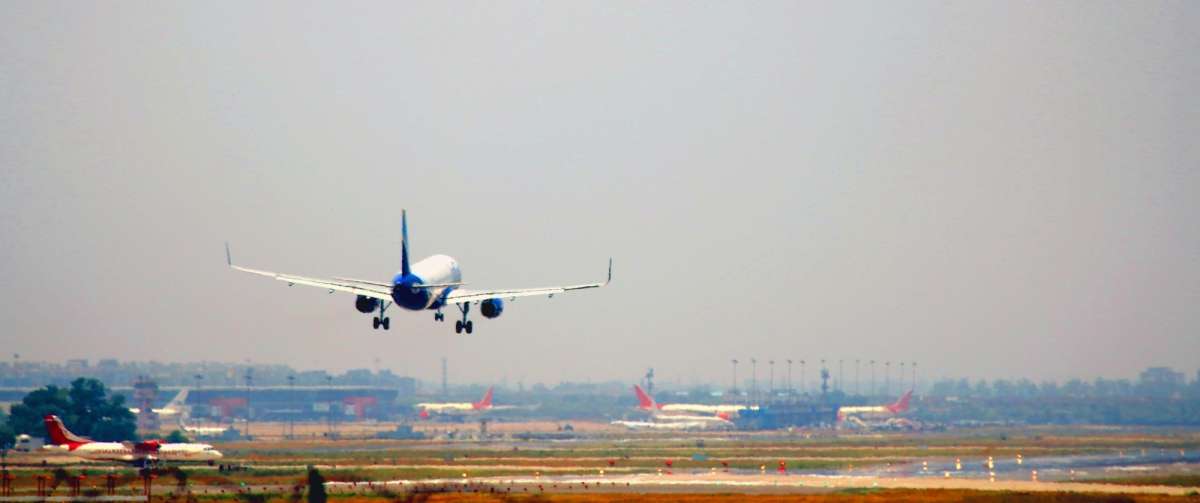India aims to reach net zero emissions by 2070 and several Indian airports are switching to green energy and the Centre has kept a target of turning 90 airports into carbon neutral by 2024
India is going big on its commitment regarding net zero emission and switching as fast as possible to green energy in every sphere of business. In tune with this mission, several Indian airports are switching to green energy and the Centre has kept a target of turning 90 airports into carbon neutral by 2024.
India aims to reach net zero emissions by 2070. In June this year, the international airport in New Delhi adopted green energy, using only hydro and solar power for all its energy needs.

The Delhi International Airport Limited (DIAL), a GMR Infrastructure Limited-led (GIL) consortium, which manages and operates the Delhi airport, has signed a long-term power purchase agreement (PPA) with a Himachal Pradesh-based hydropower producing company for the supply of hydroelectricity for the airport until 2036.
Since June 1, the Delhi airport has adopted renewable energy use from the hydropower plant for its demand of the remaining 94 per cent, thus ending its dependency on non-renewable power. This move will help Delhi airport in the reduction of indirect energy emissions of a whopping 200,000 tonnes of CO2 every year.
Besides, DIAL has a 7.84 MW solar power plant on the airside, whereas as part of stakeholder collaboration, operators of the Cargo terminals at the airport have added another 5.3 MW rooftop solar power plant.
Working to make the aviation sector environment-friendly, Civil Aviation Minister Jyotiraditya Scindia recently informed that by 2024, more than 90 airports in the country will be carbon neutral.
The minister also added that the number of airports will also be increased from the current strength of 141 to 220 by next year.
Cochin International Airport became the first ‘green airport’ in the world, for which it was awarded the ‘Champions of Earth’ award in 2018, which is the United Nations’ highest environmental honour. The airport fully operates on solar power, which meets all its electricity requirements. This is no small feat as the Cochin airport stands to be one of the most important airports for not just India, but also the rest of the world. It is the largest airport in Kerala and the seventh largest in India in terms of passenger handling.
It is also the first-ever airport in India to be developed under public-private partnership. Installing the first solar photovoltaic power station plant on the rooftop of the arrival terminal block way back in 2013 turned out to be trendsetter. Since then, it has not looked back, adding several more solar power units to maximise energy production and produce enough for all its needs.

Mumbai’s Chhatrapati Shivaji Maharaj International Airport (CSMIA) has entirely switched to green sources for its energy consumption needs, making it one of India’s 100 per cent sustainable airports.
The CSMIA was the first in India to launch hybrid technology that solely runs on green energy since April 2022. This sustainable initiative undertaken by the CSMIA is part of the airport’s efforts that reduces its carbon footprint and further propels its journey towards net zero emissions.
Out of the total 100 per cent needs, the CSMIA procures around 5 per cent of the airport’s electricity requirement through its onsite solar generation and the rest 95 per cent from other green sources such as hydro and wind energy.
The CSMIA witnessed a rise in natural energy procurement with 57 per cent green consumption in April 2022 to a whopping 98 per cent between May and July. And, finally, attained the landmark 100 per cent utilisation of renewable sources of energy in August 2022, a national daily reported.
A transition to clean energy is a huge economic opportunity. India is particularly well-placed to become a global leader in renewable batteries and green hydrogen.
These and other low-carbon technologies could create a market worth up to $80 billion in India by 2030. Support from the international community is essential to help shift India’s development onto a low-carbon path, a paper in International Energy Agency stated.












